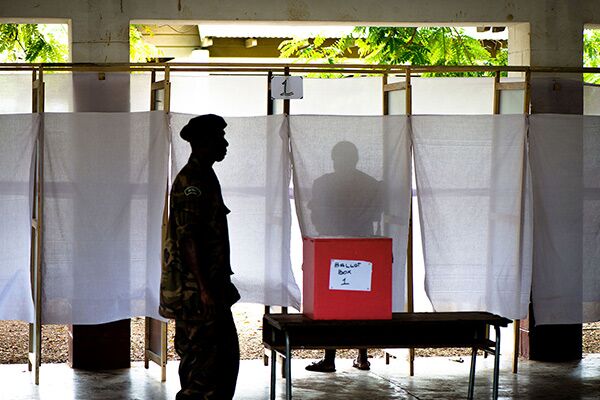COUNTING
Following the official close of polls, the ballot box is opened and all envelopes are removed from the box. The presiding officer then takes the ballot papers from the envelopes and the ballots are sorted by candidate and invalid (‘void”). When all ballot papers have been sorted, they are counted for each candidate. The polling clerks record the number of votes cast for each candidate, and all invalid votes, on two tally sheets provided for that purpose.
During the count, the presiding officer will declare a ballot paper invalid (“void”) if: (a) any writing or mark in the ballot identifies the voter; (b) the ballot is not in an envelope or is in a non-official envelope; or (c) the ballot is in an envelope containing more than one ballot paper. Invalid votes are not counted.
The presiding officer instructs the polling clerks to count the number of checks (or the marginal signatures) in the voter roll. If the number of envelopes is found to be more or less than the marginal signatures or checks made on the voter roll, the discrepancy is stated in the report.
On the close of counting, or on a recount, a candidate or his authorized agent may request the presiding officer to conduct a recount and further recounts, but the presiding officer may refuse to do so if in his opinion the request is unreasonable.


ANNOUNCEMENT AND PUBLICATION OF RESULTS
At the end of the count, the presiding officer declares counting of votes completed and formally announces the votes cast for each candidate in the polling station.
Immediately after declaring the counting of votes completed, the presiding officer completes the official report on polling, including the following information: a) the number of registered voters; b) the number of voters who voted; c) the number of invalid (“void”) ballot papers; d) the number of valid votes cast for each candidate; e) other matters required by the rules, and such other matters as the PEO may decide. The report is made in duplicate in French, English or Bislama and is signed by the presiding officer and the polling clerks. It is also countersigned by any of the candidates or candidate agents present at the count. After the report has been signed, it is placed in a sealed envelope; the presiding officer also seals in separate packets the counted and invalid ballots.
Both the report and the sealed packets (which are placed in the ballot boxes) are delivered to the registration officer responsible for the constituency. When a registration officer has received the ballot boxes with reports from the constituency’s polling stations, he ensures the ballot boxes are safely transferred to the EC headquarters in Port Vila. Tallying of results is done by the EC in Port Vila and, as soon as practicable, the EC announces the number of votes cast for each candidate in each constituency. The candidates with the highest number of votes win the corresponding seats and are declared elected.
As soon as practicable after the election, the EC ensures the results are circulated in each constituency as appropriate and published in the official Gazette.


